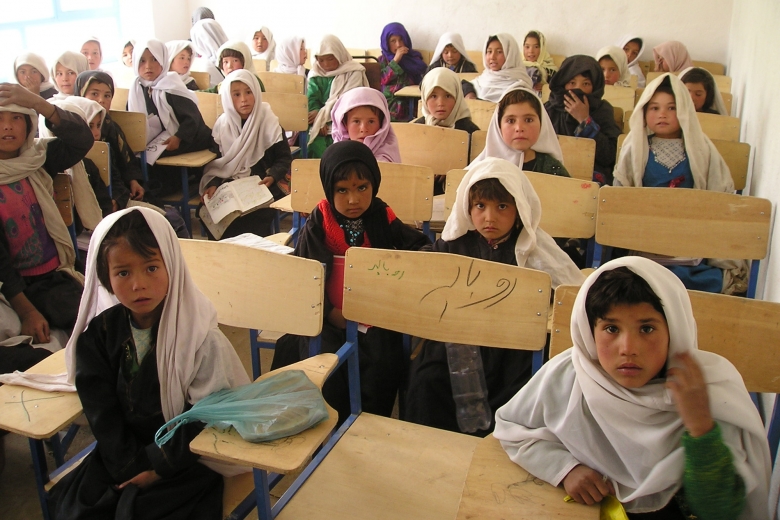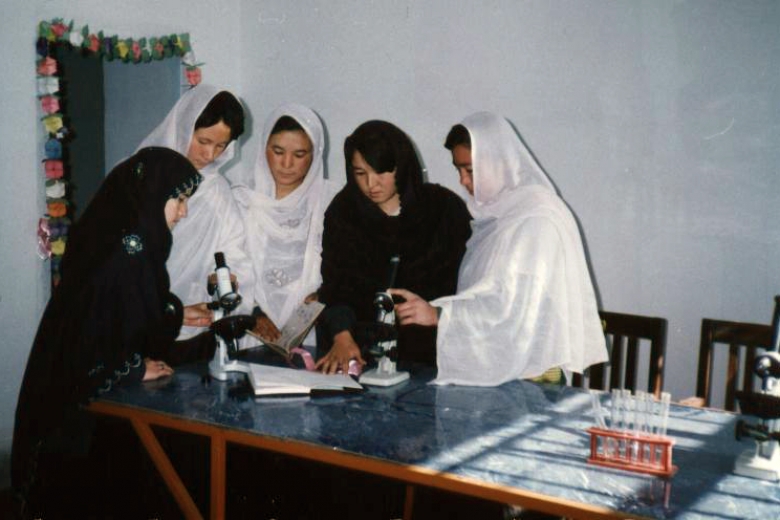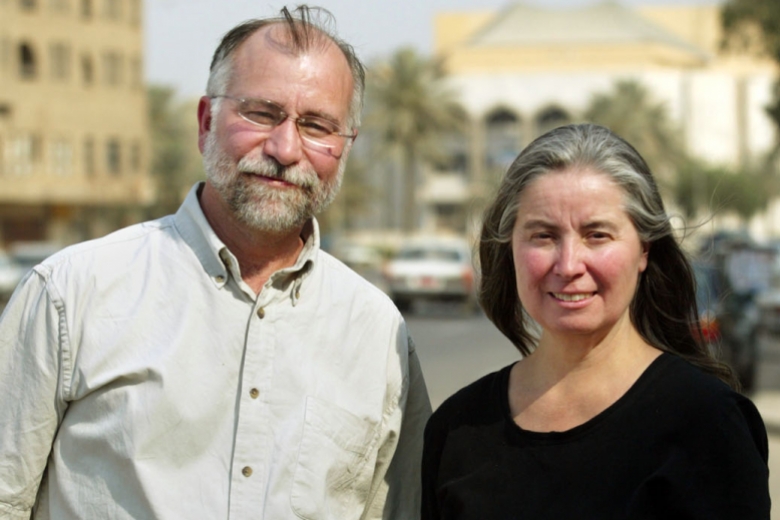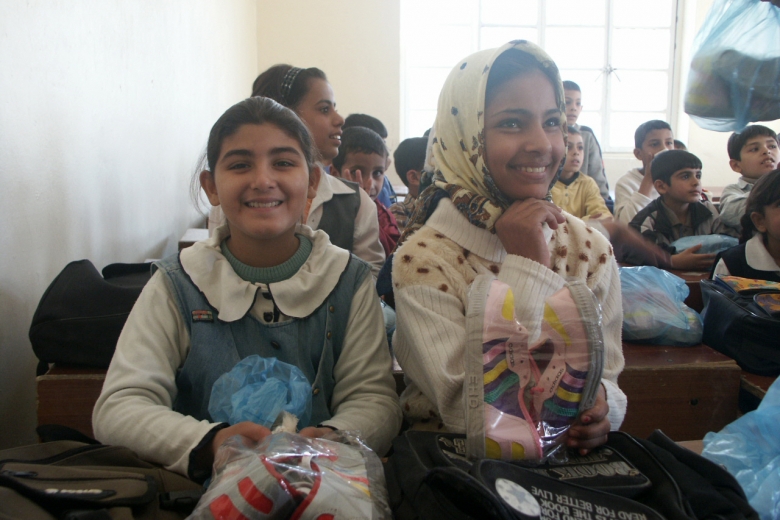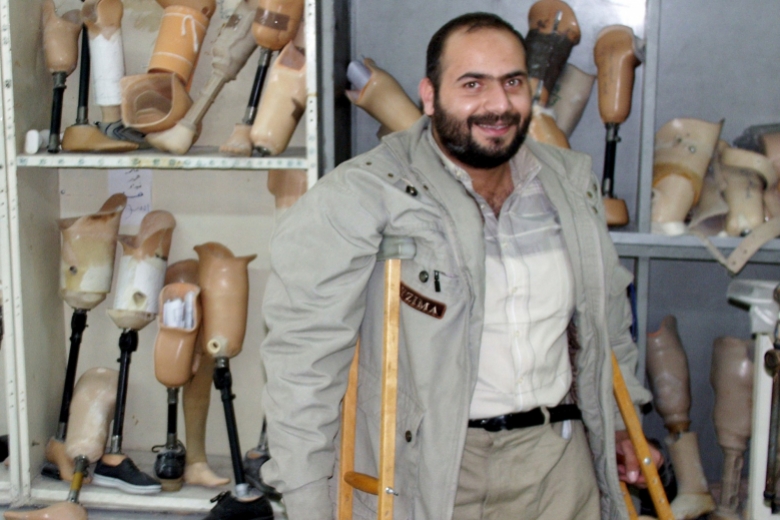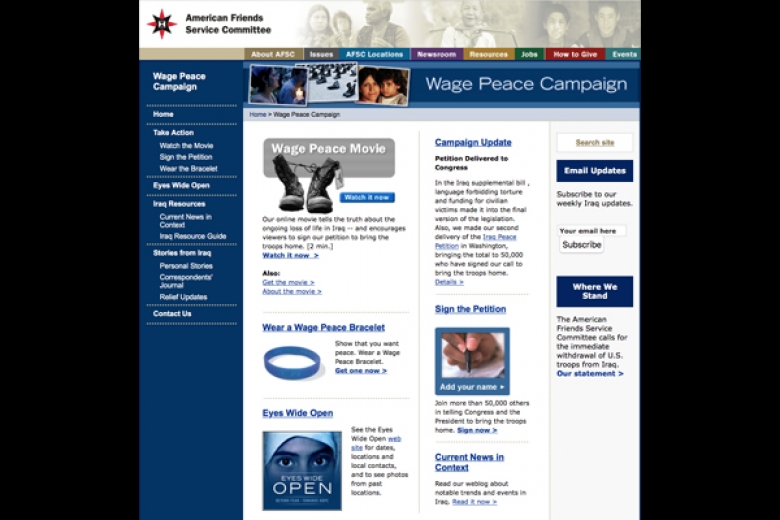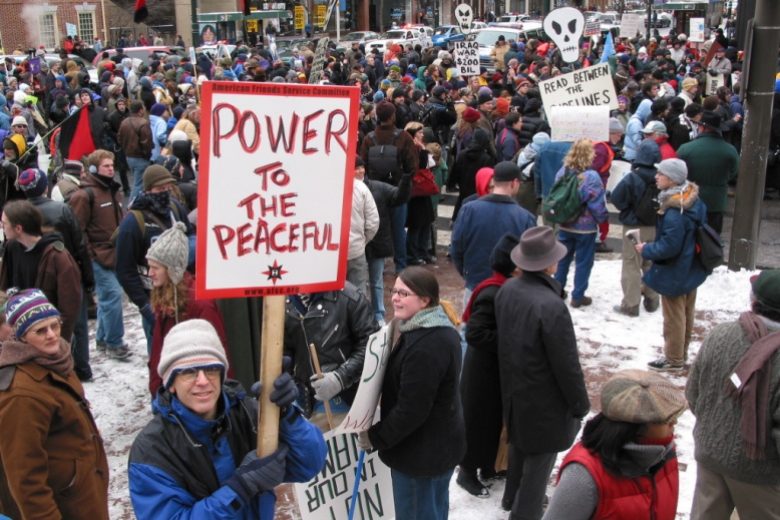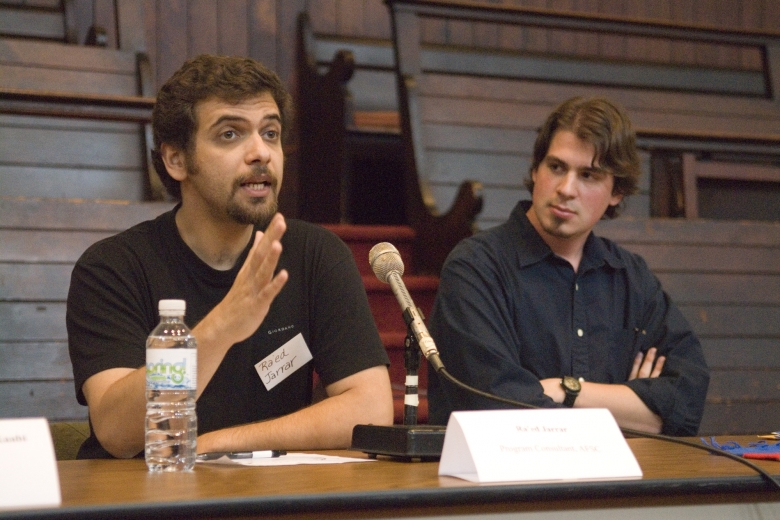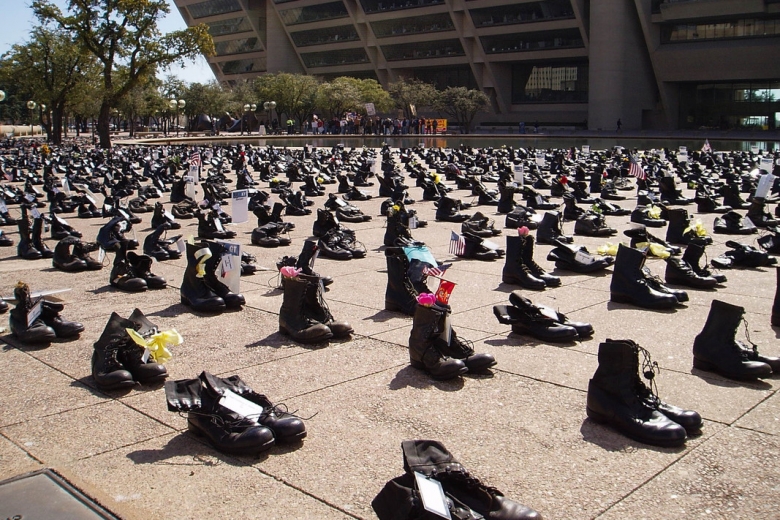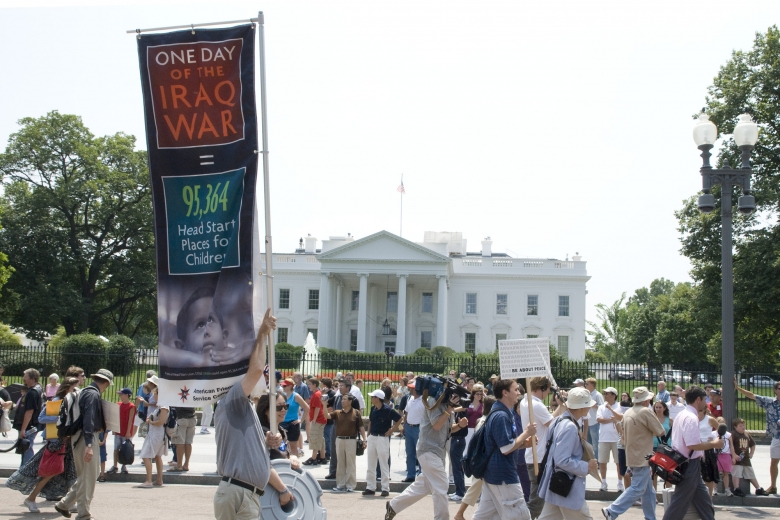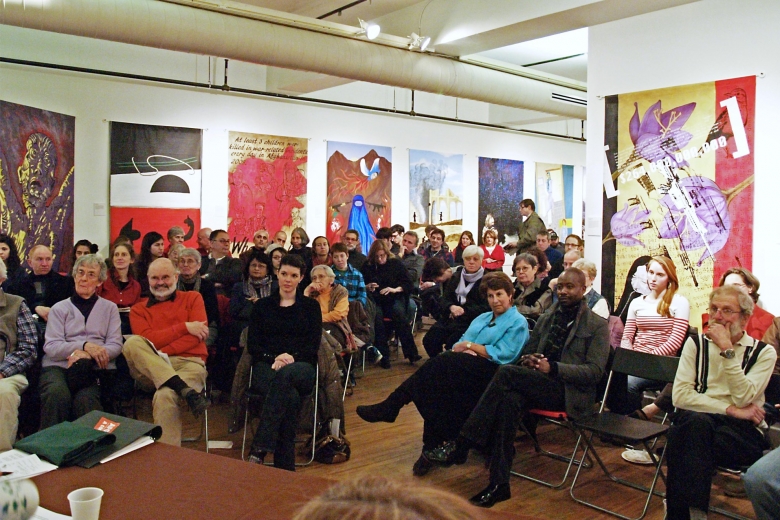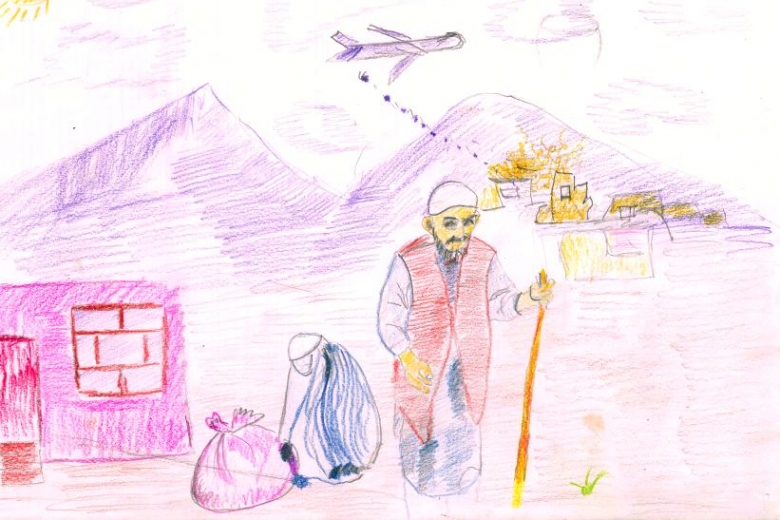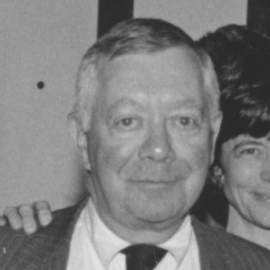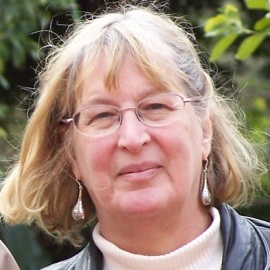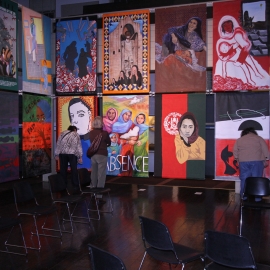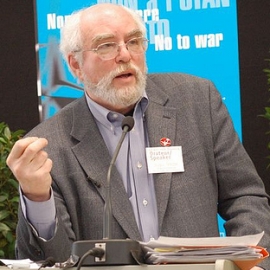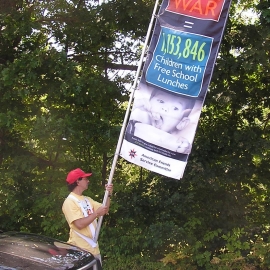The U.S.-led wars in Iraq and Afghanistan revealed the shape of warfare in the 21st century and sparked new forms of peace building. After the first war in Iraq, AFSC staff responded to the ongoing economic sanctions by organizing opposition to this brutal policy and sending water purification equipment in defiance of it.
After September 11, we embraced online organizing, enabling us to amass antiwar petitions signed by tens of thousands and participate in global protests attended by millions. In 2002, we helped found United for Peace and Justice, a national network formed to resist the second war in Iraq.
Then, as “shock and awe” gave way to prolonged conflict, we brought Iraqi voices directly to American audiences and worked against the demonization of Muslims and Arabs. We helped Americans see both the human and financial cost of the wars. Online and in person, we drew attention to the massive number of U.S., Iraqi, and Afghan casualties and the billions spent on weapons rather than for human needs at home and abroad.


